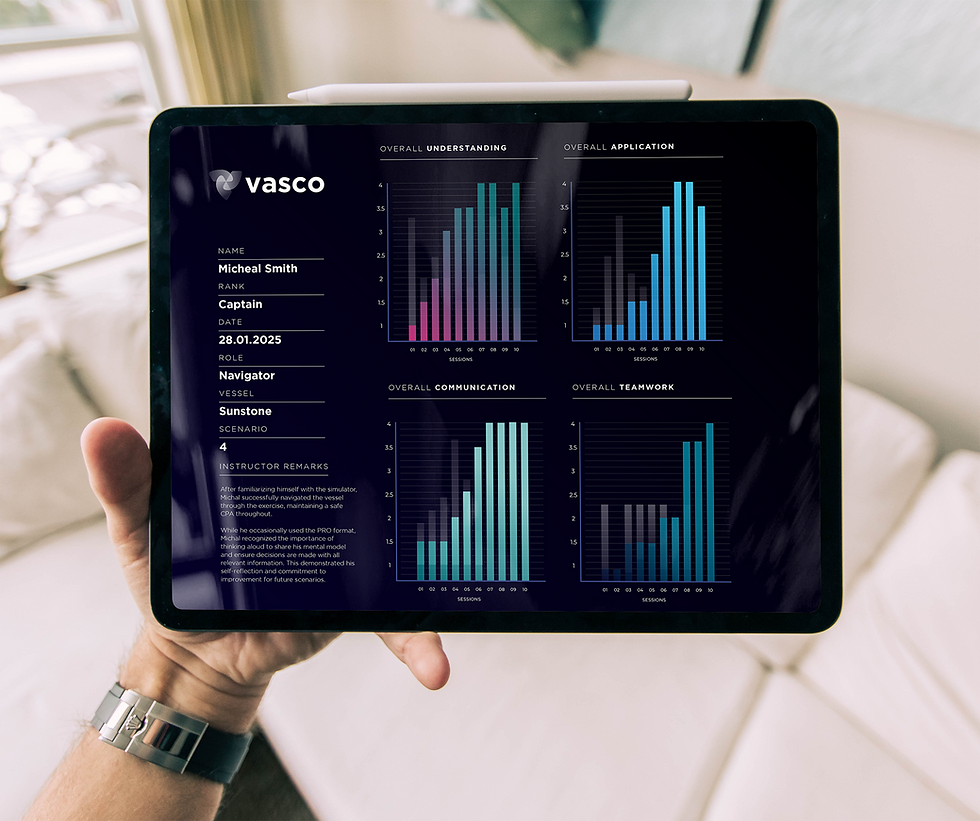Simulator Time vs Sea Time: Why Experience Alone Isn’t Enough
- Andy Parkin
- 1 day ago
- 3 min read
The UK Maritime & Coastguard Agency (MCGA) has recently taken an important step — formally recognising simulator time as part of the pathway to certification.
Under the latest guidance, up to 10 days of simulator training can now count toward sea time when working towards a Certificate of Competency, with five days in a simulator equating to fifteen days at sea.
It’s a small administrative change that carries a big message: modern simulation has become a fundamental part of maritime competence development.
Sea Time Still Matters — But it needs support
No one disputes the value of traditional sea time. Serving aboard a vessel, in real conditions, remains the foundation of maritime education. It develops awareness, teamwork, and an appreciation of life at sea that can’t be replicated ashore.
But experience alone doesn’t guarantee exposure to thorough understanding.
Not all experience is conducted in high-pressure navigational scenarios or congested waterways.
Bridge Resource Management (BRM) skills may not be fully tested during routine transits
The tempo and leadership can be inconsistent and qualitative experience is variable
Pressure on Fixed Simulator Time
With the MCA now recognising simulator time as valid, the demand for simulator-based training is set to grow.
But traditional full-mission simulators come with constraints.
Capacity is limited by physical space and instructor availability.
Costs increase as more students compete for access.
Geographic distance can limit opportunities for trainees and institutions alike.
If simulation is to play a larger role in certification and professional development, accessibility and scalability will be key. Training can no longer depend solely on time, place, or equipment availability.
Expanding Access to Simulation-Based Learning
Modern technology is already reshaping what “simulator time” means.
Crucially, they support the same learning objectives:
Application of ColRegs in dynamic traffic situations.
Practice of Bridge Resource Management and decision-making under pressure.
Reflection and debriefing through instructor-led assessment.
By blending immersive simulation with accessibility, these environments ensure that high-quality training is no longer limited by infrastructure. They make continuous learning practical — and scalable.
Enhancing, Not Replacing
Simulation doesn’t replace sea time — it reinforces it.
When used together, they deliver the balance that modern maritime operations demand.
This combined approach allows organisations to:
Identify and address skill fade between voyages.
Strengthen teamwork and communication on the bridge.
Build decision-making confidence before trainees enter service.
Standardise competence evaluation across crews and fleets.
The goal isn’t to reduce experience to a checklist, but to ensure that every hour spent training — whether at sea or in simulation — builds measurable capability.
The Future of Readiness
As the MCA and other regulators evolve training standards, one principle is clear: competence must be measured, not assumed.
The next generation of seafarers will learn through a blended model — part real-world experience, part high-fidelity simulation — with objective assessment at its core.
And as simulation technology continues to advance, it’s becoming possible to deliver that experience anywhere in the world.
Solutions like VASCO, Kilo’s untethered VR Bridge Simulator, are already helping maritime schools, defence clients, and operators achieve exactly that — connecting teams through shared, immersive environments that develop competence and confidence without physical limits.
Conclusion
Sea time will always matter.
It builds experience, intuition, understanding, and understanding, whilst also meeting the needs of individual ambition.
But when combined with structured simulator time — and supported by scalable, objective technologies — the industry can deliver a higher, more consistent standard of readiness.
Because true competence isn’t about where you train, but how well you’re prepared when it matters.




Comments